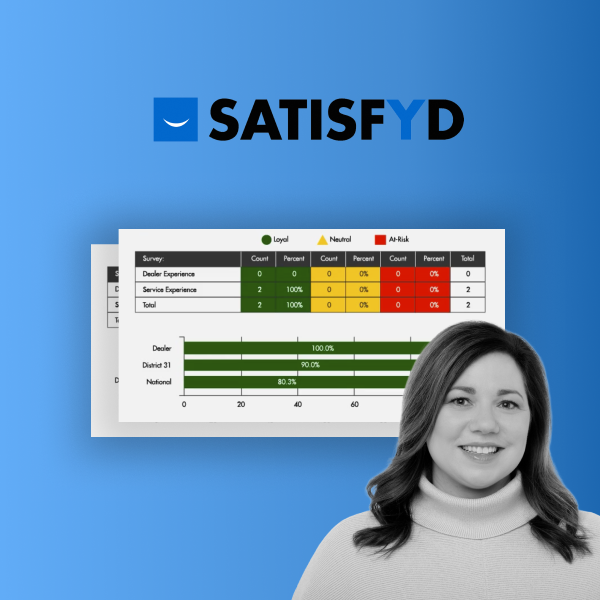In the age of big data, data governance and business intelligence (BI) are becoming increasingly essential for organizations seeking a competitive edge.
Data governance refers to the overall management of data availability, usability, integrity, and security, while business intelligence involves analyzing data and using it to support various business decisions.
Data-driven decision-making is becoming more important as the pace of change increases and the corporate landscape becomes more competitive. And as organizations become more reliant on BI, they also need an effective data governance framework to guide how they work with data.
This blog post explores the pivotal role that data governance plays in reporting and data analysis, and the steps your organization can take to develop a data governance framework for business intelligence.
What Is Data Governance?
Data governance is a set of policies, procedures, and standards that ensure high-quality data management throughout the entire data lifecycle. Its core objectives are to provide a framework for data quality, data protection, and data policy management.
When applied to business intelligence, data governance acts as the backbone that supports analytics by ensuring data is accurate, secure, and in alignment with your company's policies and requirements.
A well-established data governance framework brings consistency to complex information by eliminating mismatched formatting across data sets. It also gives everyone who works with your data a clear set of rules for creating, accessing, modifying, and even deleting data when it's no longer needed.
At a high level, organizations with strong data governance frameworks are typically more efficient and see increased accuracy in analysis and forecasting compared to those that don't prioritize data governance.
Benefits of Data Governance

- High Data Quality: Data governance promotes high-quality reporting by keeping your data secure, consistent, and accurate. Plus, regular data cleansing processes help prevent errors in your BI reports.
- Enhanced Data Security: Access controls are a key pillar of data governance. They ensure that only authorized personnel can access sensitive data, which lowers your risk of data breaches and helps prevent leaks of sensitive information.
- Regulatory Compliance: Your data governance model should adhere to all applicable compliance frameworks, such as GDPR, CCPA, and more. It also helps you proactively prepare for audits, giving you a clear, organized record that demonstrates compliance.
- Operational Efficiency: With all your data clearly formatted, organized, and secured through reliable access controls, your users can create, analyze, and modify reports and dashboards quickly and with minimal errors or redundancies.
- Easier Collaboration: Consistent formatting and proper data management create a uniform 'data language' or single source of truth for your entire organization, reducing confusion and paving the way for collaboration across teams and departments.
So, how do all these benefits tie into your BI operations, and how can the right governance model help you maximize the value of your data?
The Intersection of Data Governance and Business Intelligence
Data governance is a crucial part of BI as it prioritizes data accuracy and consistency, both of which are non-negotiable elements of effective, actionable reports. The success of your BI efforts lies in the quality of the data you're analyzing. If that data is full of errors or has been unknowingly modified by an individual user, the results won't be valuable. Or worse, errors will go undetected, and employees will act on inaccurate information.
You'll often hear BI analysts and other business leaders say, "Good data in, good data out," and the same risky alternative is true in the reverse — poor-quality data in means poor-quality reports coming out.
Data governance frameworks help create a unified overview of information and a strong foundation for reporting and analysis by integrating all data sources into a single, consistent format.
Moreover, these frameworks improve data accessibility while upholding stringent security measures, all to protect sensitive information without obstructing access for essential users.
Establishing a Data Governance Framework for BI Success
So how do you bring the core pillars of data governance, like security, accuracy, and compliance, into your teams' existing workflows and daily interactions with data?
Step One: Identify Stakeholders
Like any strategic initiative, your data governance project needs a clearly defined team of accountable parties to be successful.
Start by identifying who will be responsible for outlining and implementing your data governance framework. Will the responsibility fall on your IT department, your data analysts, or your Finance team? The answer will be different for everyone based on your organizational structure and how you use data today. Often, the same team that manages your BI solution will take charge of data governance efforts.
Once your team is in place, take some time to gather feedback, priorities, and perspectives from all parts of your organization. Learn which departments are most focused on data governance and identify any requirements or limitations you might need to consider when outlining new policies.
Step Two: Develop or Update Policies
With your key objectives in place, it's time to start developing policies for data quality, security, and access.
Your specific policies will depend on your BI environment, data sources, and a mix of internal and external requirements. Consider how any new policies will affect your existing data practices, and look for opportunities to minimize disruption where possible.
If you already have compliance-related regulations about data access in place, can you expand them to your BI practices? Look for opportunities to optimize existing rules and regulations when you can, and build new policies only when you don't have a foundation to start from. This will minimize the learning curve for your end-users when it comes time to adopt your new data governance framework company-wide.
Step Three: Outline a Clear Data Management Process
Consistent formatting and robust security set the stage for effective data analysis and reporting, but data management is essential for ongoing success. After you've outlined how data should be organized, secured, and accessed, it's time to think about the data management lifecycle.
Outline processes for data collection, storage, and maintenance. These will include defining a list of approved data sources, establishing data hierarchies for data warehouses and databases, and establishing regular data cleansing practices.
Step Four: Consider the Role of Tools and Technology
Explore ways to roll out your data governance framework inside the tools and systems you already use, and as you expand your tech stack, keep data governance top of mind. Many software solutions allow you to transfer roles and rights from an existing framework.
For example, TARGIT's parameterized roles feature allows you to configure user roles based on existing attributes in your external security platform or company directory. This makes it easy to set up multiple users inside our BI platform using your existing roles and rights, ensuring consistent access controls across users and groups.
You might also be able to integrate and transfer Active Directory contacts directly, so users can use single-sign-on (SSO) to log into all the business applications they use on a daily basis, including your BI solution of choice.
Explore the Role of Data Governance in Your BI Strategy
Data governance lends many strategic advantages to BI. By eliminating redundant processes and streamlining reporting, you can stay focused on acting on your data rather than chasing down missing pieces, correcting errors, or manually configuring data sets to fit your reporting structures.
Improved data quality translates to more accurate and actionable insights, which in turn fosters enhanced trust in BI outputs among your workforce, customers, and anyone else who relies on your company's reports and dashboards.
Additionally, when data governance aligns closely with BI objectives, it encourages increased collaboration between data teams and business users, leading to more coherent and goal-oriented analytics initiatives. These benefits collectively enable you to realize lasting business impacts from your data by using it to inform decisions, shape strategies, and spark innovation.
The role of data governance in BI and analytics is becoming more vital as organizations scale and evolve with the rapid pace of market changes. In fact, all three of the top trends in BARC's Data, BI & Analytics Trend Monitor 2024 relate directly to data governance and security.
Download the full report to learn more about these trends, see how they've evolved in recent years, and learn how leading organizations are integrating them into their BI operations.






